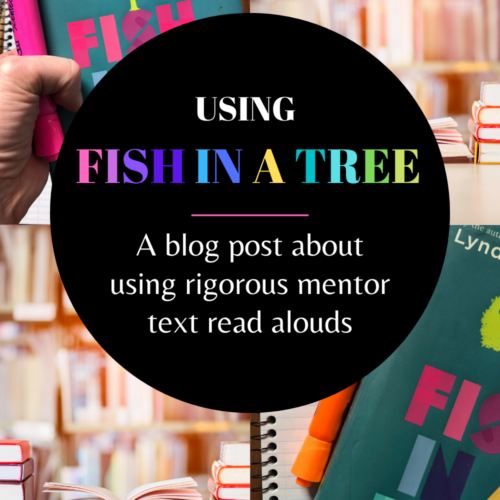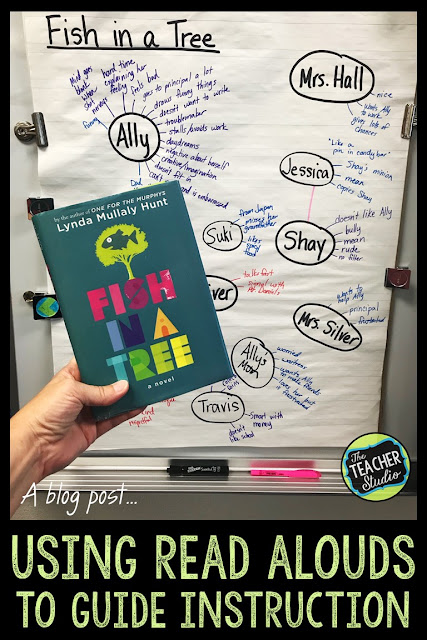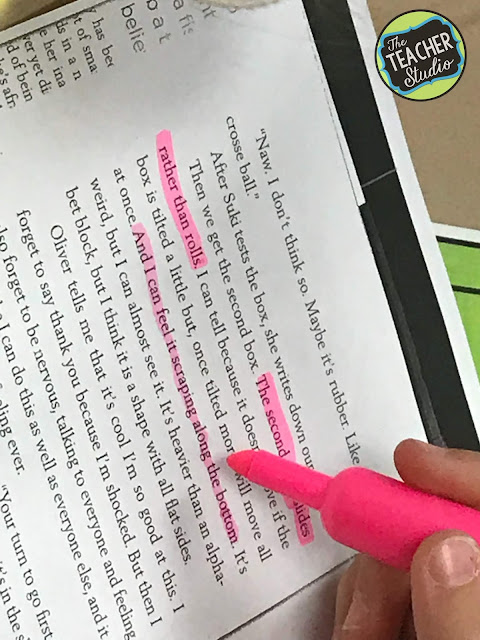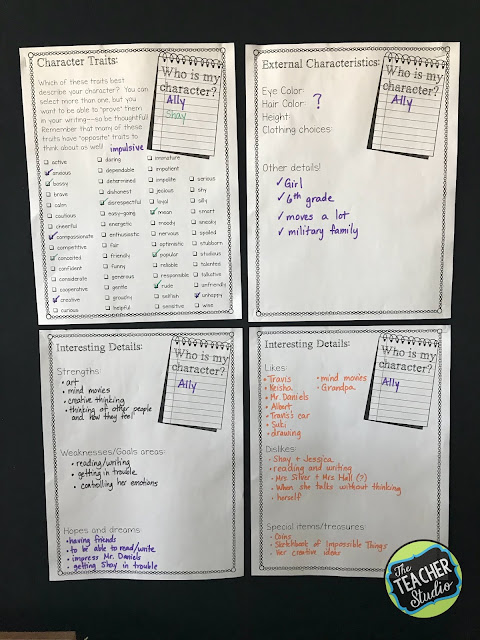I don’t know about you, but one of my favorite times every day is my read aloud time. I read aloud picture books. Articles. Poems. But my favorite of all is the novels I choose to share with my class. “Fish in a Tree” by Lynda Mullaly Hunt is one of the best. I choose different texts for a variety of reasons…but I always like to keep in mind that read alouds are a powerful teaching tool where ALL students can have access to rich, meaningful texts–even if the content is far above their independent reading level.
For me, “Fish in a Tree” is my “go to” choice for a mentor text when we do our narrative unit because we want our students to “read like writers” and “write like readers” so we really intertwine our reading and writing work. We study narratives that we read and then take what we notice and apply those skills as we write our own narratives.
That being said, I truly feel our read alouds should NOT be ruined by making students do tons and tons of work…there is something to be said for simply enjoying a beautiful text. For that reason, I am very judicious about what I do to supplement my novels. Here are a few quick and easy ideas that you might want to consider to gently “use” these great novels to supplement your teaching.
1. Character tracking and mapping
One thing that is so easy to do while you read a chapter book that doesn’t detract from the enjoyment of the story at all is to invest some time early on “tracking” characters. We track their traits, their interests, and their connections with either other (see the pink connecting lines!). This chart can be added to as the story evolves and as new information surfaces–and as characters change. This is posted on the board where I do my read aloud, and I just love it when students refer back to it or make observations.
When we write our own narratives, we make similar webs to show how our different characters are connected and the most important things about them. Read like a writer–and write like a reader!
2. Studying text with close reading of “Fish in a Tree”
Another simple suggestion for making the most of your read aloud novels is to do a “close read” activity with one or two pages of the text. As we prepared to write our own narratives, I wanted students to see how the author helped them to visualize parts of a specific scene. I made copies of two pages and pairs worked to reread them carefully and to highlight words or phrases that helped them “see” what was going on. I have done similar close reads to look at the way the author uses dialogue, describes the setting, shows emotion, and more!
3. Using elements of the text as models for our own writing
One thing I like to do is tie my reading instruction to our written work. We are reading realistic fiction–and writing it at the same time. I use my read alouds to study the characters and then use the
same forms to create our own characters and stories. It really helps them see how writers work and, as a result, they end up with some really well-planned writing!
4. “Quick Writes” to show deep thinking about texts
Like I said earlier, picking read alouds that promote deep thinking and discussion truly gives you a great way for ALL students to have these conversations. This is true even when they are not yet reading at that level. By asking students to do “quick writes” about different topics related to your read aloud, you can accomplish a number of critical things. You can work on writing mechanics and conventions with little ten minute “writes” where all students have something to write about because you now have a shared experience (the text).
You can get to the heart of what students are understanding by asking them to reflect on absolutely anything from characters to key events to predictions. In fact, it can be a wonderful way for students who are less willing to share at other times to show you what is going on inside their brains. I absolutely love it when I see great thinking from students who would never be able to independently read that text. It is preparing them for the day when they can! I do these quick writes in their writing notebook and on the computer. I love being able to send one slide with a prompt through Google Classroom and then be able to look at them online, but sometimes a quick notebook write is just as good. Students can meet in pairs or small groups and share and work on these great book discussions.
“Fish in a Tree” is definitely my favorite read aloud to start the year. Other favorite titles? “The Eight Keys”…”Flutter”…”Wonder”…”Dash”…”Out of My Mind”…and then always a few new ones each year!
Looking to use any of these resources with your students? (NOTE: My “Fish in a Tree” resource now has both print and digital access included!)





























